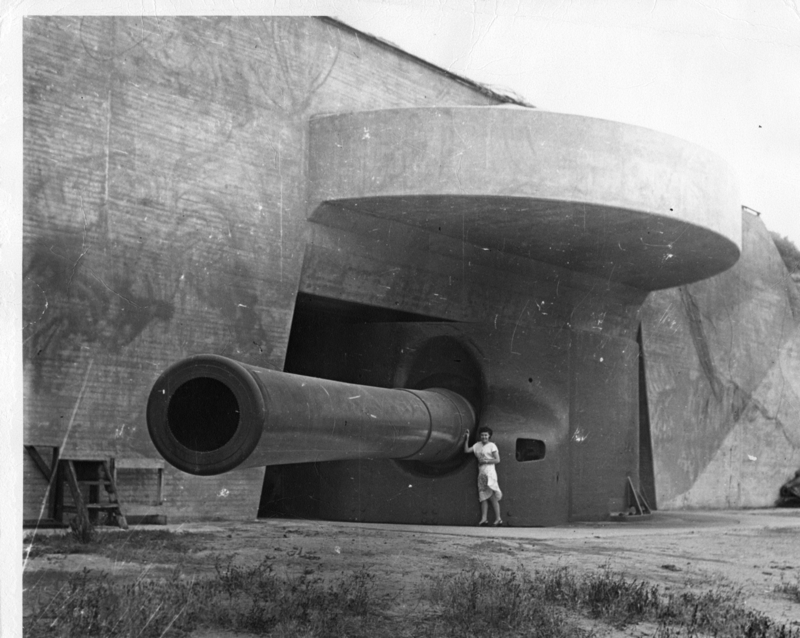1942-1949: WWII and Cabrillo National Monument
The arduous road to attain Cabrillo National Monument was only exacerbated by the United States involvement into WWII, December 7th, 1941 marked Japans attack on Pearl Harbor. Walter G. Smith the editor of the San Diego Sun started with the simple idea of commemorating Cabrillos landing on San Diego, soon after the monument's journey was championed by Carl Heilbron to finally Sen. Ed Fletcher. "The statue arrived in San Diego in 1940 and underwent a series of relocations." [1] The start of WWII shifted San Diego's priorities, the possible threat of war thwarted any chances of permanently situating what we know today as the Cabrillo National Monument.
1942 - The monument was closed to visitation, and the Army resumed temporary control of the area. The lighthouse was used for a time as a signal tower to question the identification of ships before they were permitted to pass through the submarine nets stretched across the entrance to San Diego Harbor. [2]
1943 - "Battery Ashburn was built in 1943, and the base end station (bunker) was where the officer in charge of Battery Ashburn worked." [3] These two individuals help visualize the magnitude of these weapons, WWII and Cabrillo National Monument would forever share the inseparable history of their brush with war.
"The commander of 16-inch-gun Battery Ashburn operated from the bunker located at Cabrillo. On the top level (BC3) he directed the firing of the guns. The lower level (B1/3 S1/3) served as one of the five base end stations (bunkers) for Battery Ashburn. The roofs were camouflaged to resemble large rocks. Steel rings on the roofs served as anchors for camouflage netting. The steel shutters that protected the observation slits still remain. An exterior flight of concrete steps leads to the lower level." [4]
1946 - The National Park Service reclaimed its wandering child, and the monument fell back under the supervision of Sequoia National Park. The Army willingly repaired damage done to the lighthouse during the war. On November 11, 1946, the National Park Service reopened the monument to visitation. [5]
1949 - On September 29, 1949, The San Diego Union announced that the "wandering" Cabrillo statue was finally at rest. The rededication ceremony took place before 700 attendees near the old lighthouse. [6] Along with an additional 140 acres, that were granted by President Eisenhower and Ford with the intentions that it would serve for national security. Cabrillo National Monument beginnings were centered around attracting more visitors to San Diego and ideally improving the economy, with the tides of time and changing cultures, this monument has slowly morphed to accommodate the needs of an intersectional society.





